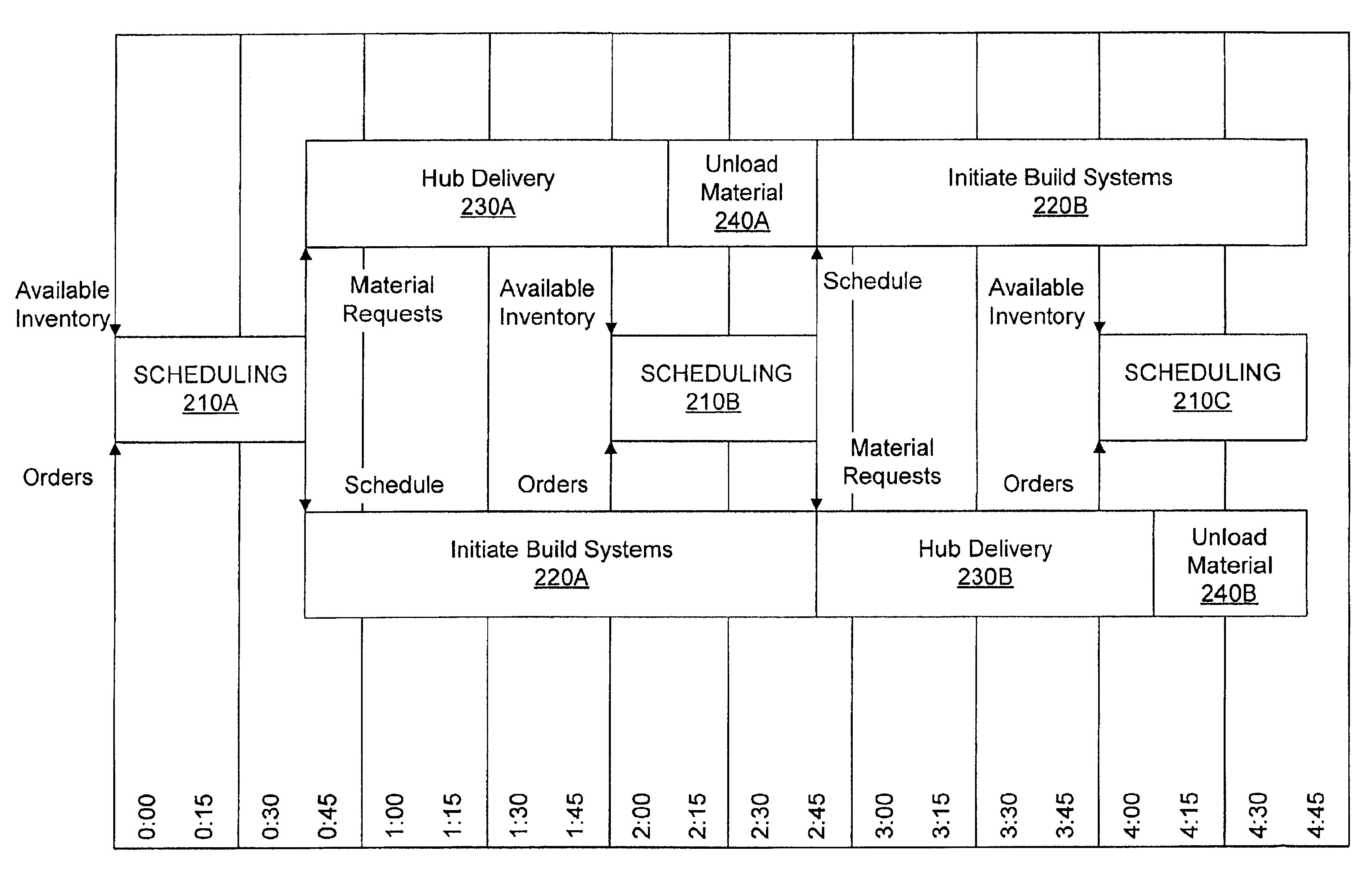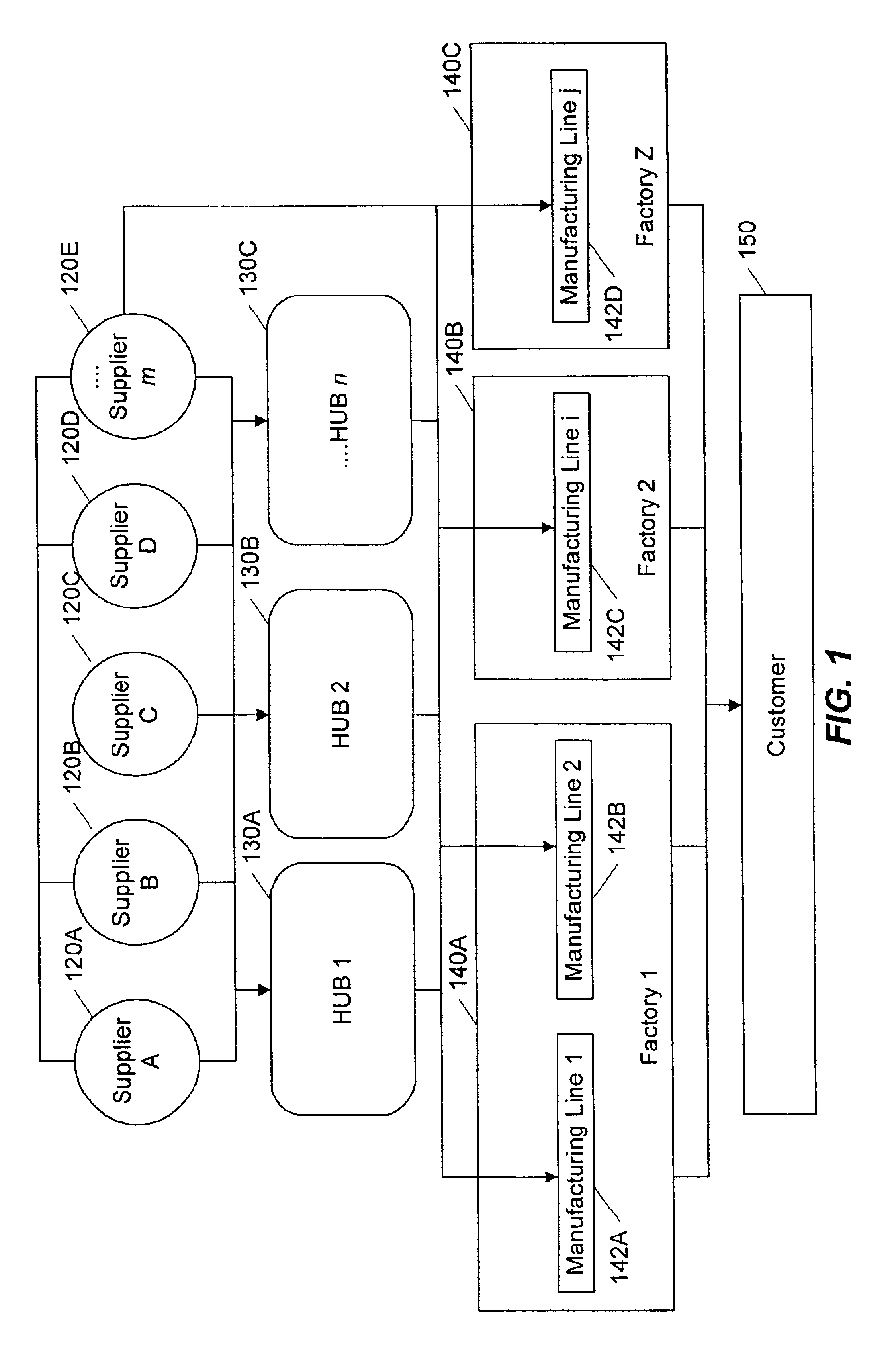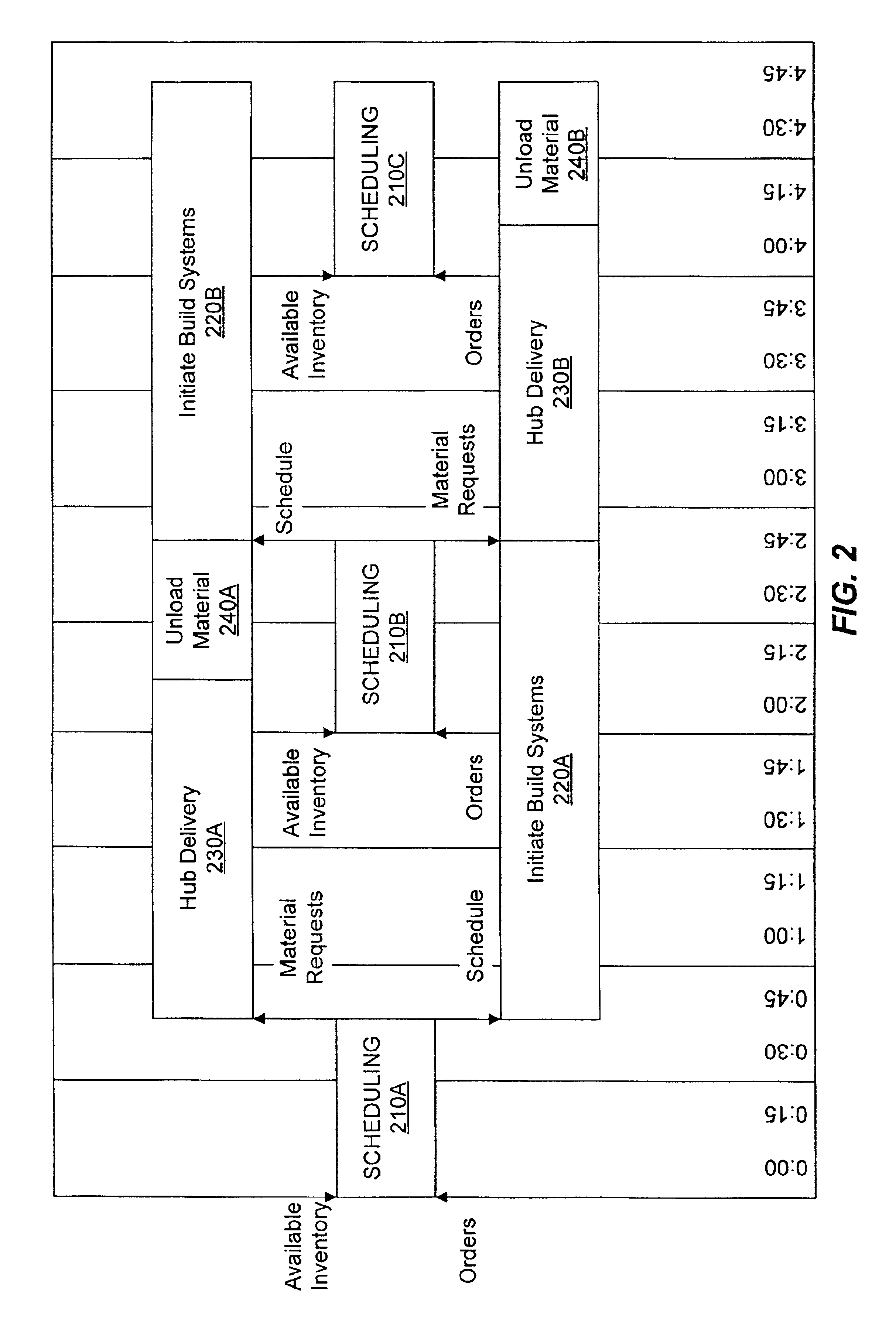Closed loop demand fulfillment system and method
a demand fulfillment and closed loop technology, applied in the field of closed loop demand fulfillment system, can solve the problems of inability to accurately schedule work in a manufacturing environment, inability to maintain high inventory levels, and inability to guarantee the availability of the right inventory
- Summary
- Abstract
- Description
- Claims
- Application Information
AI Technical Summary
Problems solved by technology
Method used
Image
Examples
Embodiment Construction
[0037]The following is intended to provide a detailed description of an example of the invention and should not be taken to be limiting of the invention itself. Rather, any number of variations may fall within the scope of the invention which is defined in the claims following the description.
[0038]In the demand fulfillment system and method of the present invention, the inefficiencies resulting from using demand forecasts are overcome by using customer orders and the source for demand, and material availability, and material availability times to determine supply to plan work schedules and material delivery schedules for multiple operations and / or manufacturing lines of a factory.
[0039]The demand fulfillment system of the present invention considers all outstanding customer orders as a source of demand from the time the customer order is received until the customer order is fulfilled. Similarly, the demand fulfillment system of the present invention considers all available inventor...
PUM
 Login to View More
Login to View More Abstract
Description
Claims
Application Information
 Login to View More
Login to View More - R&D
- Intellectual Property
- Life Sciences
- Materials
- Tech Scout
- Unparalleled Data Quality
- Higher Quality Content
- 60% Fewer Hallucinations
Browse by: Latest US Patents, China's latest patents, Technical Efficacy Thesaurus, Application Domain, Technology Topic, Popular Technical Reports.
© 2025 PatSnap. All rights reserved.Legal|Privacy policy|Modern Slavery Act Transparency Statement|Sitemap|About US| Contact US: help@patsnap.com



